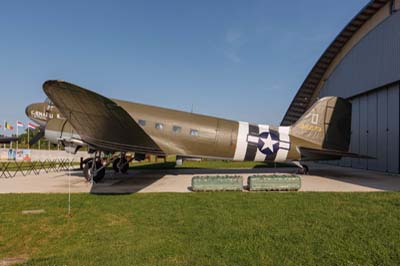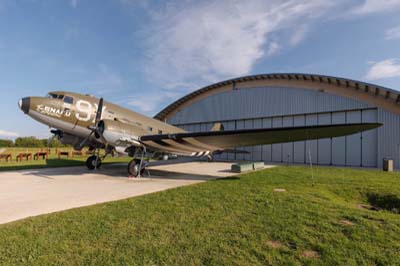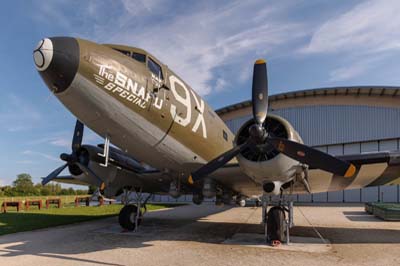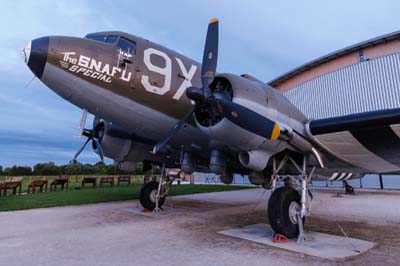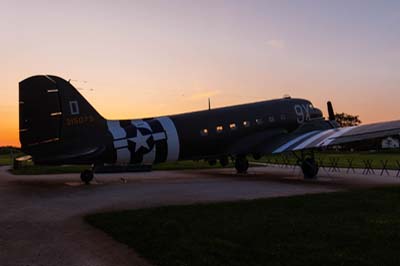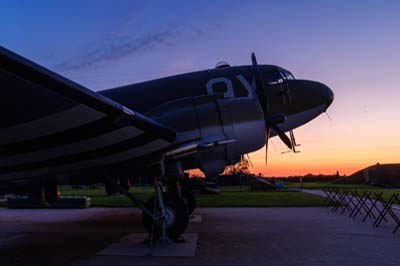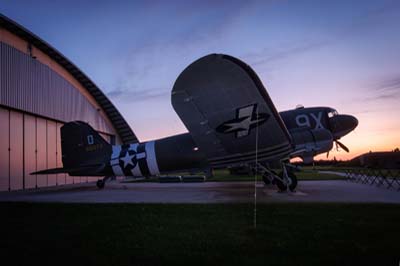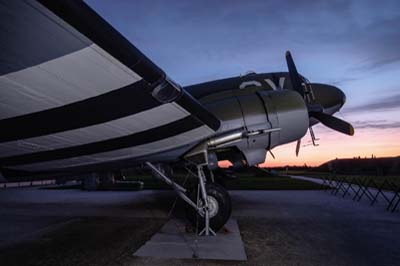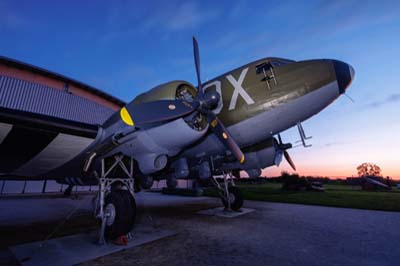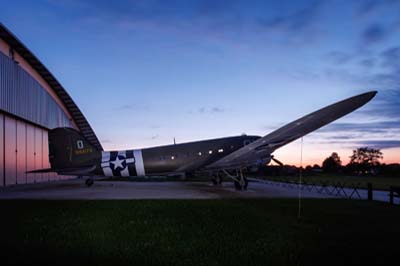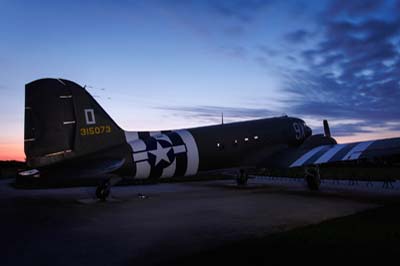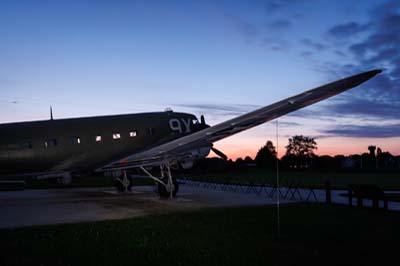Museum Merville-Batterie
Merville, France
June 2024
|
During World War Two the Germans constructed the Merville gun battery to protect the Orne estuary which leads to Caen. As part of the German's Atlantic Wall, the battery was built in readiness of a coastal invasion by the Allies. It comprised four 100mm mountain howitzers with a range of 8,400 meters. Threatening the British landings at Sword Beach, it was one of the first places to be attacked, starting with bombing raids in May 1944 and the British Army's 9th Parachute Battalion on D-Day. Two RAF C-47 Dakotas crashed in Merville during the first two days of the Normandy landings.
Following the renovation of the German Army constructed fortification, the Merville-Batterie Museum was opened on June 5, 1983. A USAAF C-47 which survived the invasion is now on display at the museum. |
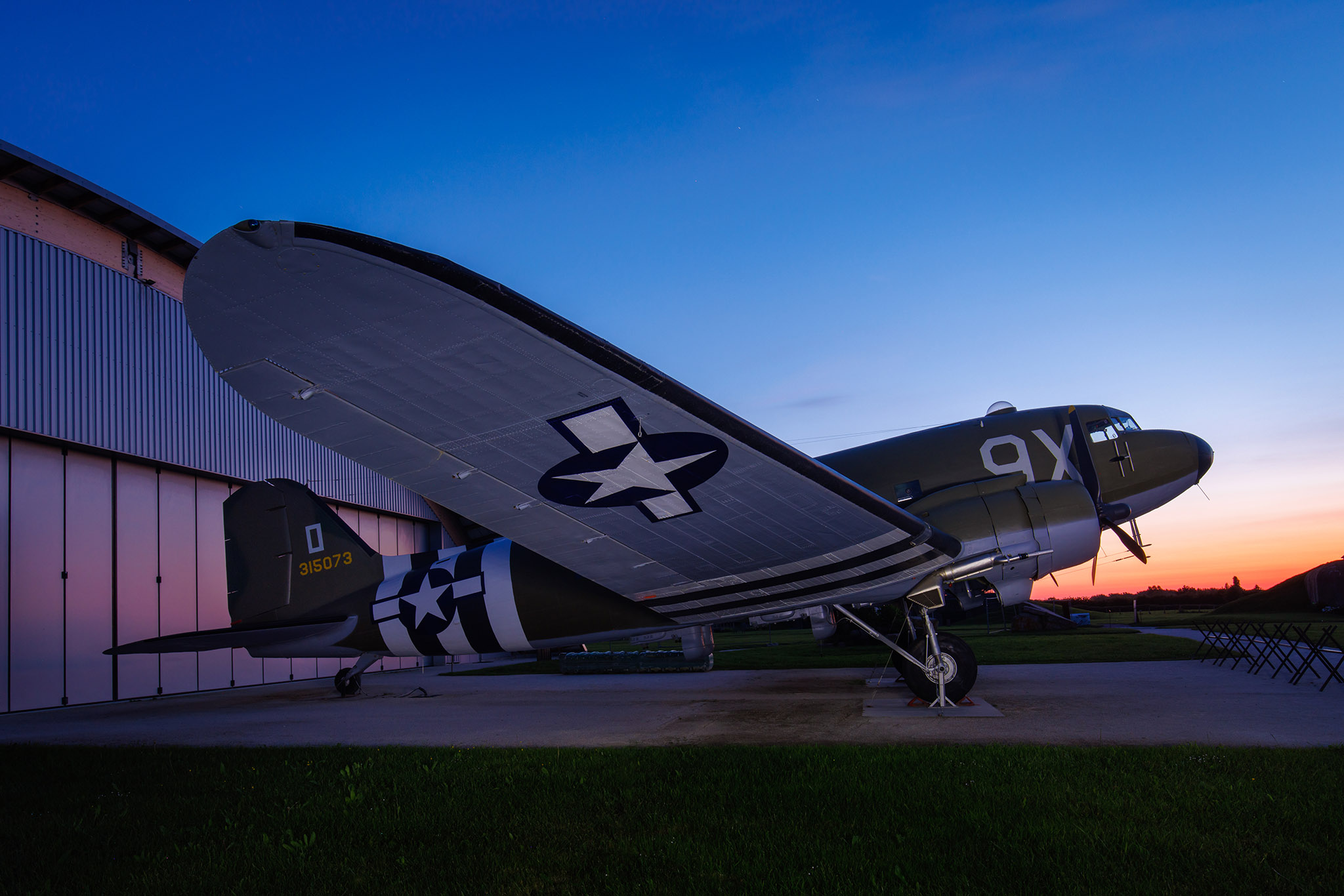 |
Douglas C-47A Skytrain (43-15073 '9X-O') named 'The SNAFU Special', was built at the Douglas factory in Long Beach, California leaving there on January 29, 1944 bound for Europe, she crossed the Atlantic and arrived in the United Kingdom via West Africa. Assigned in May 1944 to the 9th US Army Air Force in the 95th Troop Carrier Squadron (Squadron code 9X) of the 440th Troop Carrier Group based at Exeter, England, where she is nicknamed by her crew 'The S.N.A.F.U Special', the SNAFU acronym meaning; Situation Normal : All Fucked Up. She was soon flying in support of the American Expeditionary Corps, in preparation for the invasion along the coast of Normandy. On June 6, D-Day, she crossed the channel towards the Cotentin Peninsula and dropped paratroopers of the 501st Parachute Infantry Regiment (101st Airborne Division) south of Sainte-Mère-Église. Throughout the Battle of Normandy she flew supply sorties using temporary landing strips, returning to the UK with wounded soldiers. Until the end of the was she flew in numerous operations across Europe including the parashoot drop to capture the bridge at Arnhem, Holland and the siege of Bastogne, France, and the crossing of the Rhine. She was hit a number of times by enemy fire but made it to the end of the war when she as sold to a Czechoslovakian airline.
In 1960, the French Air Force acquired her, operating the transport before passing her on to Yugoslavian army in 1972. Put to use as a static instructional airframe she languished at Sarajevo. During the Balkan war she was machined-gunned, but still survived the conflict. It was at this time French soldiers recognised the C-47 as being a D-Day veteran.
It was not until early 2007, the Merville Battery Museum discovered that the C-47 was still intact in Bosnia, and launched the process for the repatriation, restoration and display at the Merville battery site museum situated close to the D-Day Sword beach. Finally in August 2007 after many set backs the Bosnian Defence Ministry following meetings between French and President of Bosnia-Herzegovinia agreed the transfer of the aircraft. It was to be dismantled and transported on three semi-trailers, arriving at Merville in December 2007. The Association Merville-Dakota with over a hundred volunteers completed the restoration at nearby Caen-Carpiquet airfield in June 2008, after 5,000 hours of demanding work, repainting the C-47 in the colours she wore in 1944.
|
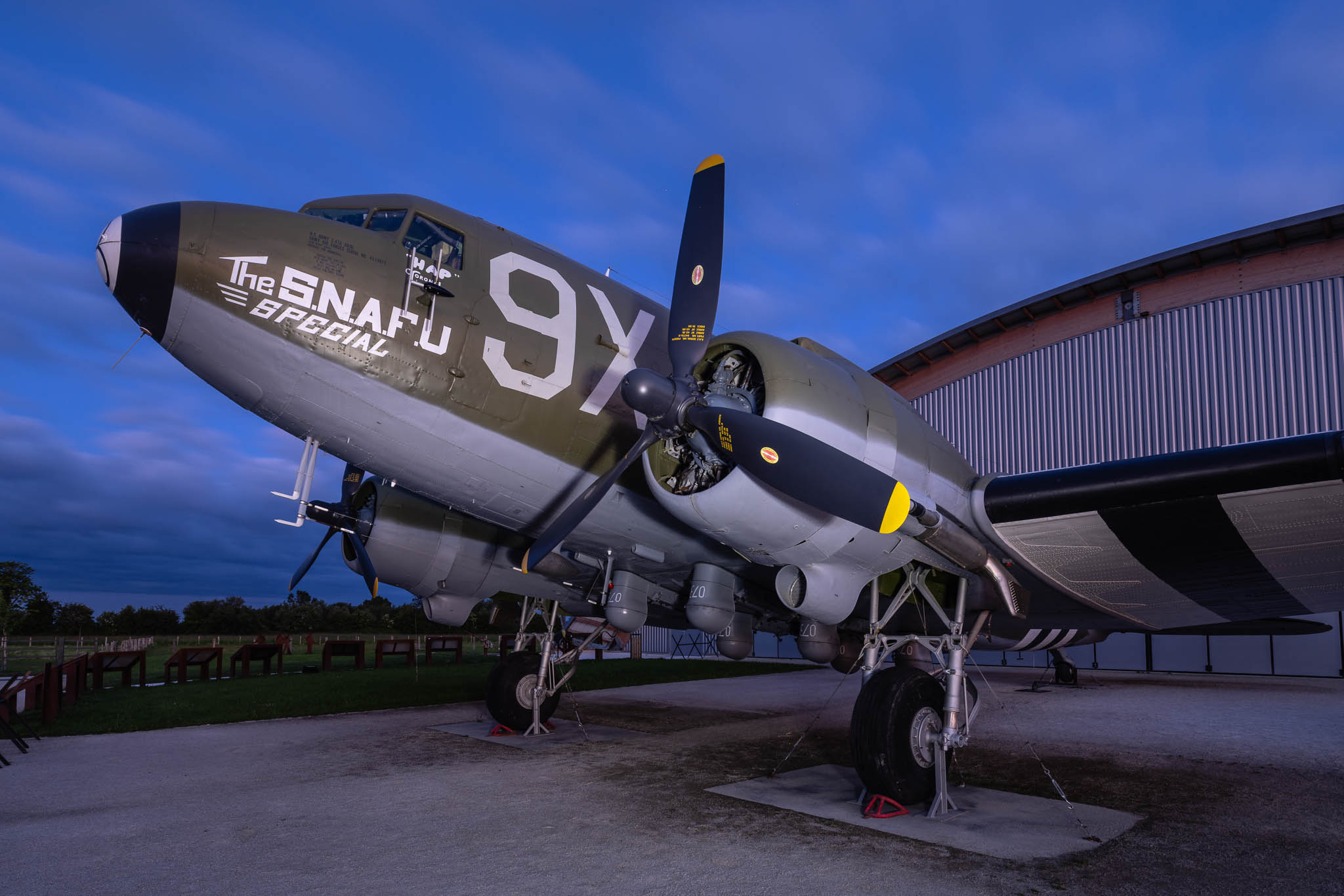 |
Douglas C-47A Skytrain (43-15073 '9X-O').
Photography: The first images were taken at 19:00. With sunset at 21:50, I took these images between 21:30 and 22:45. |


